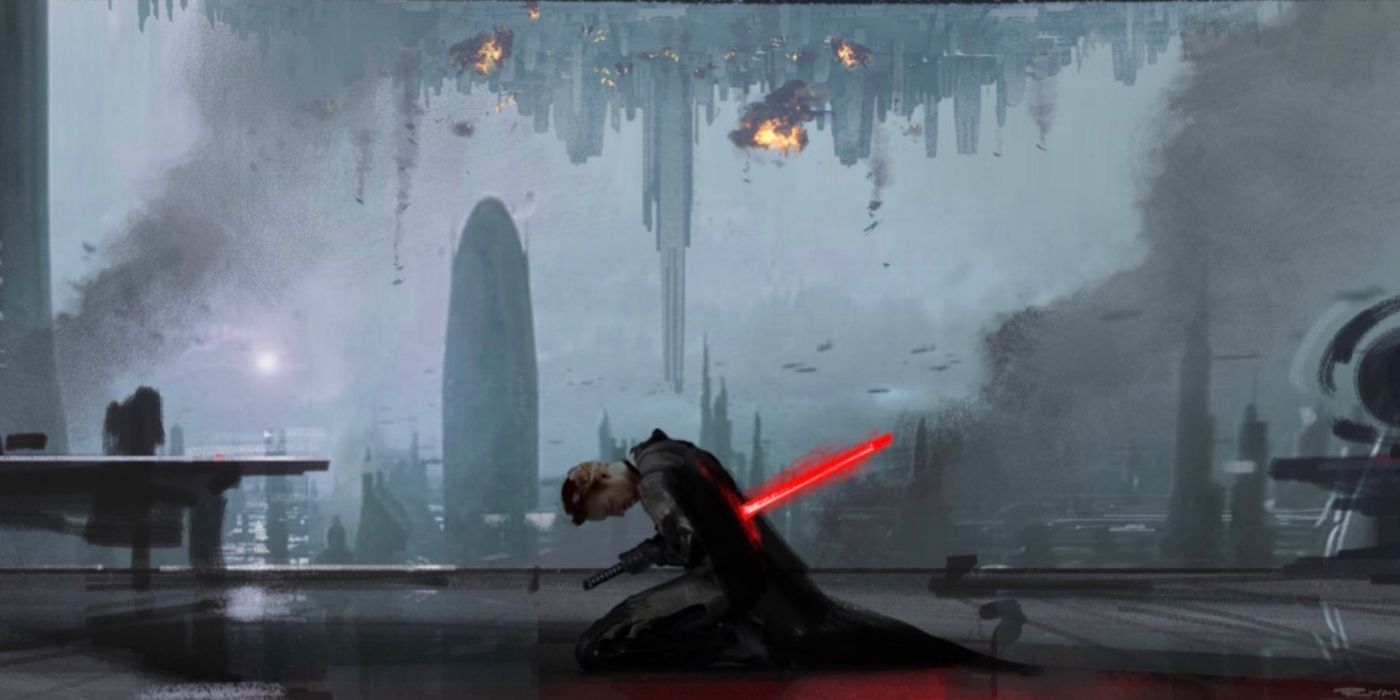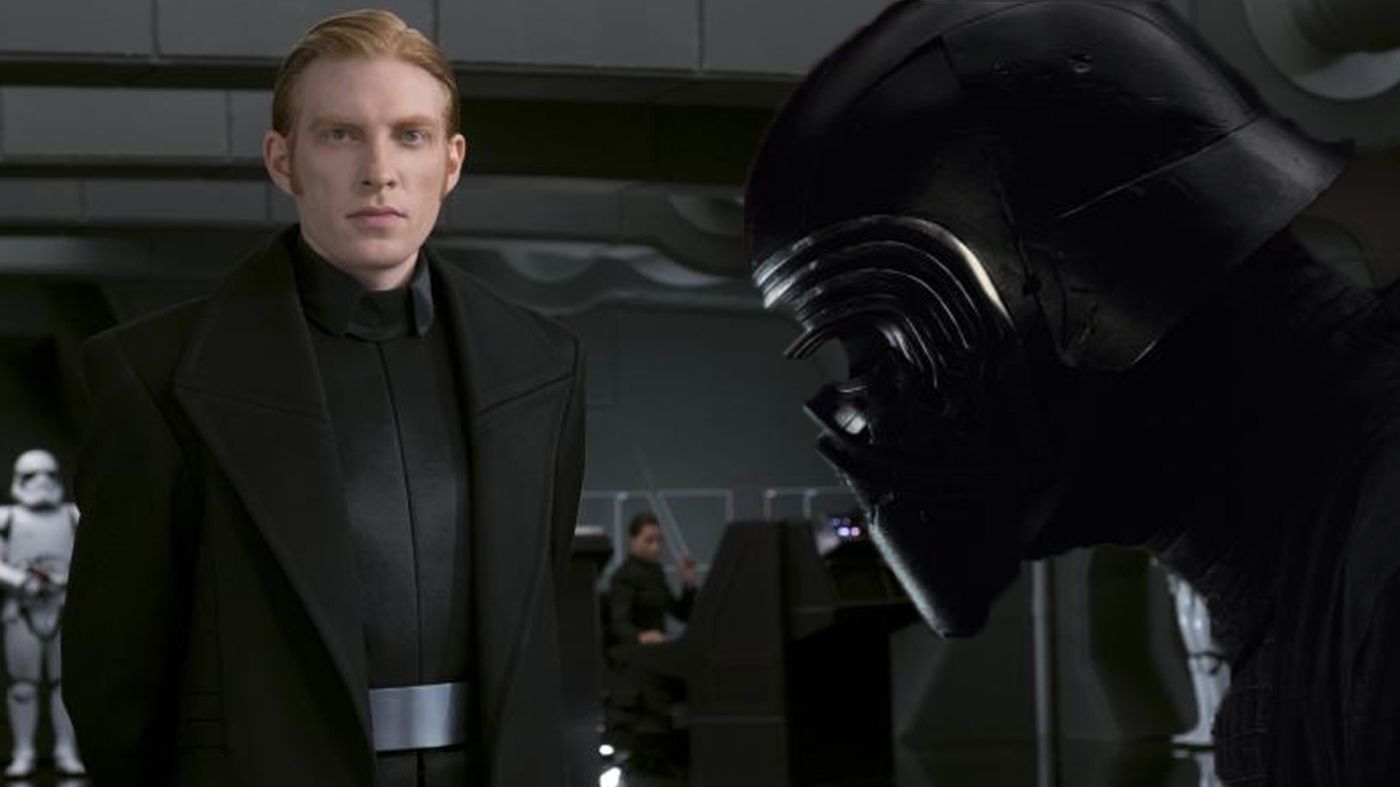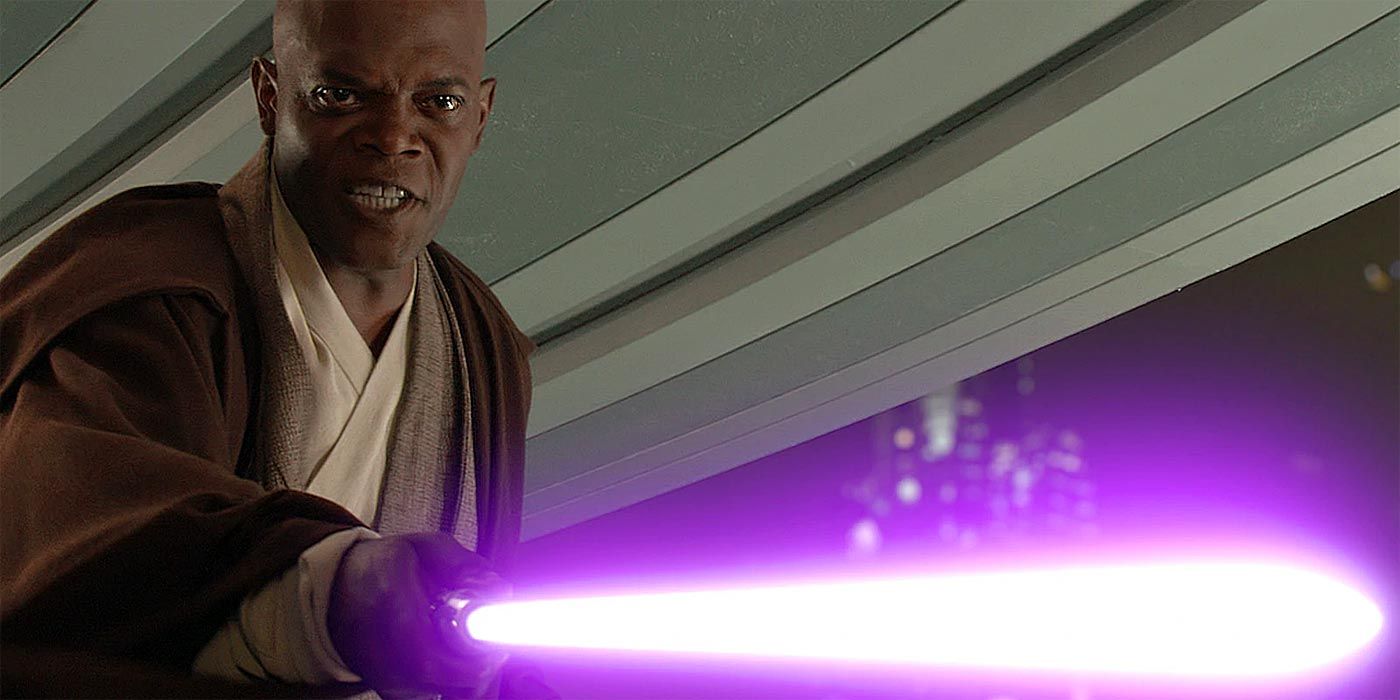Colin Trevorrow and Derek Connolly’s unused script and concept art for their version of Star Wars: Episode IX, titled Duel of the Fates, has been the source of bittersweet pleasure for all its revelations of what the saga's finale could have been. In addition to a climactic return to Coruscant, Rey’s thematically relevant double-ended lightsaber and a darker, nastier character arc for Kylo Ren, some of the scrapped film’s most poignant little details revolve around the trilogy’s supporting villain, General Hux.
Off the heels of his successful suppression of the Resistance at the conclusion of The Last Jedi, Trevorrow and Connolly’s screenplay finds General Hux promoted to the title of Chancellor as he presides over the conquered city-planet of Coruscant. At one point in the script, Chancellor Hux heads to his quarters, revealing his large collection of Sith and Jedi artifacts. Later in the same scene, Hux tries to move a coin using the Force, to no avail as, “his face grows red from trying.” To add insult to injury, Kylo Ren walks into the room just after to witness Hux’s pitiful act.
This characterization shows a deeper side of Hux than is ever presented in the last two films or The Rise of Skywalker. Evidently, Hux is a wannabe Sith tragically not blessed with a connection to the Force. Instead, he takes to collecting lightsabers as a way to fulfill his unachievable aspirations. This extra detail makes the character infinitely more flavorful than the cartoonish character presented throughout the sequel trilogy.
Hux’s impossible dreams also paint his disdainful relationship with Kylo Ren in a more interesting light, one that operates on jealousy rather than blind hatred. Hux envies Kylo’s affinity to the Force because Hux is an insignificant, powerless nobody while Kylo is the latest in a line of Force user royalty.
Hux has only been able to compensate for his lack of innate, self-born power by rising through the First Order’s ranks and acquiring the high title of Chancellor, but in the same scene Hux tries to move a coin, Kylo scorns this very fact. “I don’t need grand displays and processions. Or titles. Chancellor.”
Later on, Hux submits himself to another humbling attempt to use the Force while interrogating a captured Rose Tico. “Are you trying to use the Force on me?" Rose asks after he fails again. "Oh no, see... you’re not special. I mean, at all.”
Hux’s multiple, more personal defeats throughout Duel of the Fates carry a greater weight as a result of these demonstrations of vulnerability, culminating in a death that is significantly more affecting than his demise in The Rise of Skywalker. As the Resistance begins to overcome the First Order on Coruscant, Hux realizes he’s been defeated and commits seppuku using one of his cherished treasures.
“Hux storms into his lush chamber. Goes to the collector’s case. Removes one of his prized vintage lightsabers. He activates it and IMPALES HIMSELF WITH THE PURPLE BLADE. Hux kneels, the glowing saber protruding from his chest as First Order ships descend in smoke and fire out the window.”
Though now a tragic, complex character, the weaselly, cowardly Hux is fittingly given no redemption in Duel of the Fates. It’s the polar opposite of his death in The Rise of Skywalker, where he is revealed to be a Resistance spy before getting inconsequentially shot by General Pryde.
Additionally, it’s neat to note that while the concept art shows Hux killing himself with a red lightsaber, the screenplay describes it as a rare purple one. It’s an interesting discrepancy, indicating the weapon may have belonged to the late Mace Windu, who was also killed on Coruscant in Revenge of the Sith. As with other aspects of Duel of the Fates, like the Coruscant setting, it’s another link back to the rest of the Star Wars saga, which, on top of a rich, new story, could be argued is one of the best parts of Trevorrow and Connolly’s unused screenplay.



